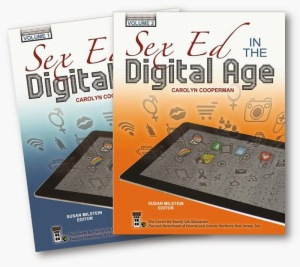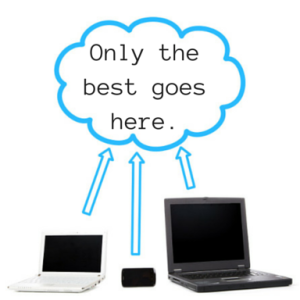 When I think about footprints, I think about the beach and those long lines of footprints you can see trailing behind you, in and out of the tide lines. It’s a happy thought, that leaves me fidgety for vacation.
When I think about footprints, I think about the beach and those long lines of footprints you can see trailing behind you, in and out of the tide lines. It’s a happy thought, that leaves me fidgety for vacation.
And then there is the other kinds of footprints. While they also show where you’ve been, they’re a little more insidious, a little more suspect, and not quite as clear cut. Teenagers may be the most oblivious to it, and may have the most to lose by the footprints they leave behind them.
DIGITAL FOOTPRINTS
By Carolyn Cooperman
Objectives
By the end of this lesson, participants will be able to:
- Evaluate their personal contribution to the digital age by providing examples of what they text, post, tweet, engage in, or investigate online.
- Assess the “digital footprint” comprised collectively by the participants in the group.
- Make decisions about what they like about their digital footprint.
Rationale
With 93% of teens using the Internet, 73% of them participating in social networking, and median text users exchanging 60 texts per day, it is mindboggling to speculate about the digital trail that adolescents leave behind.1 Just as their digital pursuits seem to vanish into cyber space, the ability to grasp the substance of their own transmissions is similarly lost. In this lesson, the individual digital footprint of each participant becomes more concrete, allowing for observation and personal reflection. Everyone also gets a chance to learn about the collective makeup of the footprint comprised by the group. By stepping back from the technological frenzy that consumes so much of daily life today, it then becomes possible to gain perspective about how technological use sheds light on values, interests, relationships, and behaviors.
The realization that, in fact, everything they are doing through a digital media can be captured and reviewed is surprising to many teenagers. While they are theoretically aware of this, they are often unaware of the many varied means by which their digital histories may be accessed.
The activity in this lesson from Sex Ed in the Digital Age asks participants to review their recent digital media communications and to assess them along a number of lines, including whether it might damage or benefit a relationship, whether it was creative, mean, or stimulating, and more.
One of the discussion questions at the end asks about the potential impact on their future, but I might be more specific than that. How might a college admissions staff or the hiring manager at their dream job perceive their digital footprint? Anyone who is hiring or extending an admissions invitation will google their applicants. Knowing your digital footprint is critical when you’re looking to further your education or professional goals. This lesson does a great job of bringing that point home.






